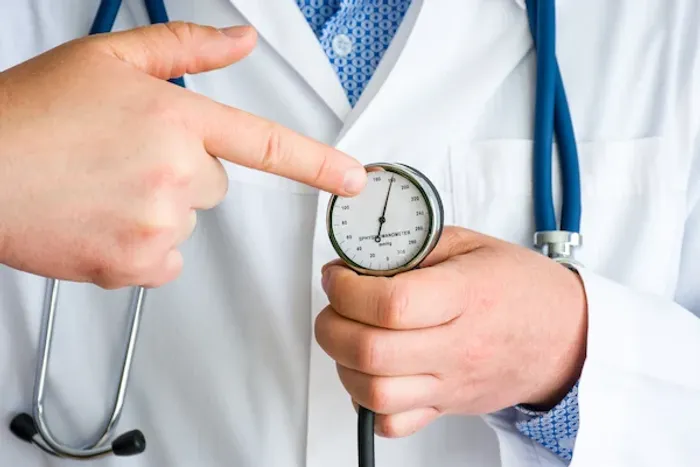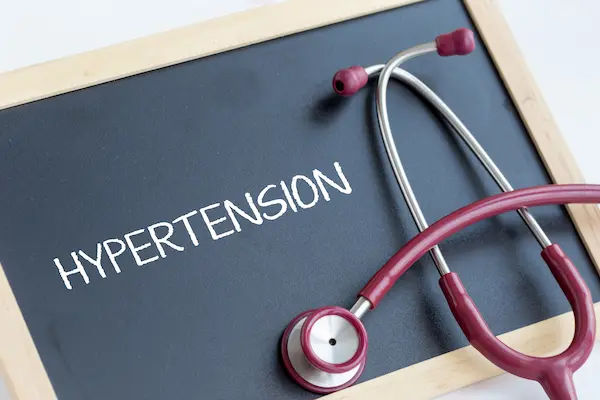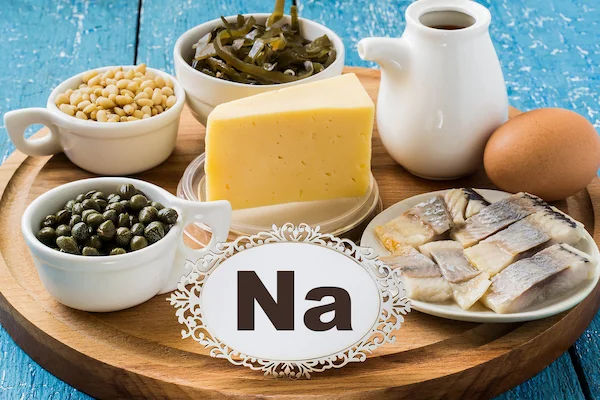Hypertension, Brain Strokes, Heart & Kidney Failure Guide
Know about the hypertension, brain strokes, heart, kidney failure, how it is all related, warning, signs, prevention and recovery, relation of hypertension and heart disease, relation between kidney diseases, treatment options and lifestyle modifications.

Written by Dr. Shaik Abdul Kalam
Reviewed by Dr. Rohinipriyanka Pondugula MBBS
Last updated on 15th Oct, 2025

Introduction
Hypertension is often silent, but its impact on the brain, heart, and kidneys can be life-changing. High blood pressure strains your arteries, accelerates wear-and-tear inside blood vessel walls, and sets the stage for brain strokes, heart failure, and kidney failure. The good news? With the right plan, most people can control hypertension and dramatically reduce risks. In this comprehensive guide, you’ll learn how hypertension harms the brain, heart, and kidneys, how to spot emergencies early, and how to build a daily routine that keeps your numbers on track. We’ll walk through accurate home monitoring, evidence-based lifestyle changes, medication options, special situations like diabetes and pregnancy, and what to do in a crisis. Whether you’re newly diagnosed or helping a loved one, this guide will help you connect the dots and take confident steps toward better brain, heart, and kidney health.
What Is Hypertension and Why Does It Matter
Hypertension means your blood pressure (BP) consistently measures too high, putting excess force on artery walls. Over time, this force damages the lining (endothelium), causing stiff, narrow vessels that restrict blood flow to vital organs. Most adults with hypertension have no symptoms, which is why it’s called “the silent condition.” Yet it’s one of the world’s leading causes of preventable stroke, heart failure, and kidney disease.
Consult a Top General Practitioner for Personalised Advice
Hypertension Reading- What do they say?
Understanding your numbers:
Systolic (top number): pressure as the heart contracts
Diastolic (bottom number): pressure as the heart relaxes
Guidelines commonly define hypertension as persistent BP ≥130/80 mmHg (ACC/AHA) or ≥140/90 mmHg (e.g., some European/UK thresholds for treatment decisions vary.
Types of Hypertension
Primary vs secondary hypertension:
Primary (essential) hypertension: ~90–95% of cases. Develops gradually due to genetics, ageing, lifestyle, and environmental factors (e.g., high sodium diet, low physical activity).
Secondary hypertension: Caused by another condition (kidney disease, thyroid disorders, primary aldosteronism, renal artery stenosis) or medications (NSAIDs, some decongestants, oral contraceptives). Consider if the onset is sudden, severe, or resistant to treatment.
How High Blood Pressure Damages the Brain, Heart, and Kidneys
Hypertension injures the endothelium—the inner lining that controls vessel dilation and prevents clotting. Injury triggers inflammation, oxidative stress, and plaque buildup (atherosclerosis). In small vessels, it causes thickening and narrowing (microvascular disease). The result: less oxygen delivery and more vulnerability to blockages or ruptures.
Brain (stroke and cognitive decline):
Chronic high pressure weakens small brain vessels, causing microbleeds, white matter changes, and a higher risk of both ischemic (clot) and hemorrhagic (bleed) strokes.
BP variability, morning surges, and lack of nighttime “dipping” are linked to higher stroke risk.
Heart (heart attack and heart failure):
Persistent pressure makes the heart muscle thicken (left ventricular hypertrophy). Over time, the stiff, thickened heart relaxes poorly (HFpEF) or becomes weak (HFrEF), leading to breathlessness and fatigue.
Hypertension accelerates coronary artery disease, raising heart attack risk.
Kidneys (CKD and kidney failure):
Kidneys’ microscopic filters (glomeruli) are pressure-sensitive. High BP scars them (glomerulosclerosis), reducing filtering capacity (eGFR) and causing protein leakage (albuminuria). It’s a feedback loop—CKD, in turn, makes hypertension harder to control.
Brain Strokes: Warning Signs, Prevention, and Recovery
Stroke types:
Ischemic stroke (~85%): A clot blocks a brain artery.
Hemorrhagic stroke (~15%): A vessel ruptures and bleeds into brain tissue. Hypertension is the strongest risk factor for this type.
Know the FAST signs:
Face drooping
Arm weakness
Speech difficulty
Time to call emergency services immediately
Other red flags: sudden severe headache, vision loss, confusion, imbalance. Never wait—clot-busting or clot-removal treatments are time-sensitive (often within 4.5 hours for thrombolysis). Hypertensive emergency with neurological symptoms is a medical emergency.
Prevention through BP control:
Large trials show that modest BP reduction translates into substantial stroke prevention. The PROGRESS trial demonstrated that BP lowering reduced recurrent stroke risk in patients with prior stroke or TIA. The Blood Pressure Lowering Treatment Trialists’ Collaboration has shown risk reduction across a spectrum of baseline pressures.
Lifestyle steps (DASH diet, less sodium, regular exercise) and evidence-based meds (ACE inhibitors, ARBs, thiazide-like diuretics, calcium channel blockers) reduce stroke risks
After a stroke:
BP targets are individualized; often, post-stroke goals are <130/80 mmHg if tolerated, particularly after the acute phase, to prevent recurrence.
Rehabilitation: Physical, occupational, and speech therapy foster recovery. Treat sleep apnea, diabetes, and cholesterol to reduce future events.
When in doubt: If symptoms persist beyond a few minutes or you are unsure, activate emergency services. For non-urgent concerns after recovery, you can consult a doctor online with Apollo24|7 to optimize BP targets and medication timing around rehabilitation.
Heart Failure: The Hidden Outcome of Uncontrolled Blood Pressure
Hypertension is a leading cause of both HFpEF (heart failure with preserved ejection fraction) and HFrEF (reduced ejection fraction). Chronically high afterload forces the heart to thicken (hypertrophy). Thickened muscle becomes stiff, making it hard for the heart to fill; you feel breathless with exertion or when lying flat, and swelling can develop in the legs.
Prevention and treatment:
BP control prevents heart failure. The SPRINT trial showed intensive BP management (target systolic <120 mmHg in selected high-risk adults) reduced heart failure and cardiovascular events, though careful monitoring for side effects is needed.
If heart failure develops, guideline-directed meds (ACEi/ARB/ARNI, beta-blockers, mineralocorticoid receptor antagonists, SGLT2 inhibitors) are used, tailored to HF type. Many of these also help blood pressure.
Salt restriction and fluid management are key. Daily weights help catch fluid retention early.
Chronic Kidney Disease and Kidney Failure: The Silent Partnership
The kidneys regulate fluid, electrolytes, and blood pressure. Hypertension damages the tiny glomeruli, causing albuminuria (protein in urine) and decreased filtering capacity (eGFR). As CKD progresses, BP often rises further, creating a vicious cycle.
Key markers:
eGFR: Estimated glomerular filtration rate. Lower eGFR means reduced kidney function.
Urine albumin-to-creatinine ratio (uACR): Early sign of kidney damage even when eGFR is preserved.
Medication choices
ACE inhibitors or ARBs are first-line for hypertension with albuminuria because they reduce intraglomerular pressure, slow CKD progression, and protect the heart.
Monitor potassium and creatinine after starting or increasing ACEi/ARB.
Targets:
Many guidelines suggest <130/80 mmHg for people with CKD, especially with albuminuria, if tolerated [10,11].
Lifestyle measures: sodium intake ideally <2,000 mg/day (5 g salt), weight management, and avoidance of NSAIDs.
When to see a specialist:
Rapid eGFR decline, persistent severe albuminuria, resistant hypertension, or electrolyte disturbances warrant nephrology referral.
If labs are due, Apollo24|7 offers convenient home collection for tests like creatinine/eGFR, potassium, HbA1c, and lipid profile—useful for monitoring CKD and cardiovascular risk.
Getting Diagnosed and Tracking Your Numbers
Accurate measurement is the foundation of good care.
In-clinic: Sit quietly for 5 minutes; back supported, feet flat, arm at heart level; use correct cuff size; avoid caffeine/exercise/smoking 30 minutes prior.
Home blood pressure monitoring (HBPM): Use a validated upper-arm device. Take two readings morning and evening for 7 days, discard day 1, average the rest [9]. HBPM helps detect white-coat (high in clinic, normal at home) and masked hypertension (normal in clinic, high at home).
Ambulatory BP monitoring (ABPM):
24-hour monitoring reveals daytime, nighttime, and morning patterns; it’s the gold standard for diagnosing masked/nocturnal hypertension and assessing dipping status .
Baseline tests:
Lipid profile, fasting glucose or HbA1c, kidney function (creatinine/eGFR), electrolytes (especially potassium), TSH if indicated, and urine albumin to screen for organ damage and guide therapy].
If your condition does not improve after trying lifestyle changes for 3 months, or if your average home readings remain >135/85 mmHg, consult a doctor online with Apollo24|7 for further evaluation and a personalized plan.
Treatment That Works: Lifestyle and Medications
Lifestyle is powerful—often lowering BP as much as a single medication:
DASH diet: Emphasizes vegetables, fruits, whole grains, legumes, nuts, and low-fat dairy; limits red meat and sweets. Can reduce systolic BP by ~8–14 mmHg.
Sodium reduction: Aim for <2,000 mg/day (about 1 teaspoon of salt total from all sources). Watch processed foods, bread, sauces, and restaurant meals.
Weight: Each 1 kg loss may reduce BP ~1 mmHg.
Exercise: 150 minutes/week of moderate aerobic activity plus 2 days of strength training can lower systolic BP by 4–9 mmHg.\
Alcohol/smoking/sleep: Limit alcohol, avoid tobacco, and screen for sleep apnea if snoring or excessively sleepy.
Medications 101 (often used in combination):
Thiazide(-like) diuretics (e.g., chlorthalidone, indapamide): potent for stroke prevention.
ACE inhibitors (e.g., lisinopril) or ARBs (e.g., losartan): kidney and heart protective, especially with diabetes/albuminuria.
Calcium channel blockers (e.g., amlodipine): effective and well tolerated.
Beta-blockers: favored in coronary disease, arrhythmias, or heart failure settings.
Stepwise approach
Start with one or two meds based on baseline BP and comorbidities; up-titrate every 2–4 weeks to reach targets. Consider fixed-dose combinations for convenience and adherence.
Troubleshoot side effects: cough with ACEi (switch to ARB), ankle swelling with dihydropyridine CCB (add ACEi/ARB or switch), low potassium with some diuretics (monitor electrolytes).
Special Situations: Diabetes, Pregnancy, Older Adults, and Sleep Apnea
Diabetes and CKD:
BP target often <130/80 mmHg if tolerated. ACEi/ARB preferred with albuminuria. SGLT2 inhibitors add kidney and heart benefits in diabetes and CKD.
Pregnancy:
Chronic hypertension in pregnancy requires safer meds (labetalol, nifedipine, methyldopa). ACEi/ARB are contraindicated. Watch for preeclampsia (new hypertension plus proteinuria or organ dysfunction). Close obstetric care is essential.
If you’re planning pregnancy or become pregnant while on BP meds, book a physical visit with Apollo24|7 to adjust therapy safely.
Older adults and frailty:
Avoid overtreatment that causes dizziness/falls. Individualize targets (often <130–139 systolic depending on tolerance). Check for orthostatic drops.
Sleep apnea (OSA):
Common in resistant hypertension and nocturnal hypertension. CPAP can lower BP and improve daytime energy. A sleep study is warranted if loud snoring or witnessed apneas.
When to Seek Urgent Care (and What to Do in a Crisis)
Hypertensive urgency vs emergency:
Urgency: Very high BP (e.g., ≥180/120 mmHg) without organ damage symptoms. Usually managed with oral meds and close follow-up.
Emergency: Very high BP with symptoms of organ damage—stroke signs (FAST), chest pain, severe shortness of breath, confusion, vision loss, seizures, or acute kidney injury. Call emergency services immediately.
Stroke protocol:
If any FAST sign appears, note the time, do not drive yourself, and get to the nearest stroke-ready hospital. Treatments are time-limited.
Chest pain/shortness of breath:
Could be heart attack or acute heart failure. Emergency assessment and rapid BP control may be lifesaving.
After the crisis:
Ask for a written BP plan, including medication changes and home-monitoring targets. Share your home readings at follow-up. If symptoms persist beyond two weeks after discharge, consult a doctor online with Apollo24|7 for further evaluation.
Staying the Course: Adherence, Costs, and Technology
Adherence tips:
Combine pills when possible (fixed-dose combos).
Use weekly pill boxes, phone alarms, and pair dosing with a daily habit (e.g., brushing teeth).
Refill early and keep a spare set when traveling.
Conclusion
Hypertension is common, often silent, and deeply connected to the health of your brain, heart, and kidneys. The same pressure that pushes blood through your arteries can, over time, injure the delicate lining of blood vessels and starve organs of steady, healthy flow. The results—brain strokes, heart failure, and kidney failure are serious, but they’re not inevitable. When you track your numbers accurately, reduce sodium, eat a DASH-style diet, stay active, and work with your clinician on the right medication plan, you can cut your risks dramatically.Set yourself up for success with a consistent routine: validated home monitor, simple logging, and reminders. Ask about your specific targets especially if you have diabetes or CKD and recheck labs as advised. If BP’s still high after a month of steady effort\ consult a doctor online with Apollo24|7 to adjust your plan.
Consult a Top General Practitioner for Personalised Advice
Consult a Top General Practitioner for Personalised Advice

Dr. M L Ezhilarasan
General Practitioner
6 Years • MBBS
Visakhapatnam
Apollo 24|7 Clinic - Andhra Pradesh, Visakhapatnam

Dr D M Karthik
General Practitioner
4 Years • MBBS, Fellowship in Diabetes Mellitus, Advance certificate in Diabetes Mellitus, Derma Nutrition Certification
Visakhapatnam
Apollo 24|7 Clinic - Andhra Pradesh, Visakhapatnam

Dr Suseela
General Physician
5 Years • MBBS
Bengaluru
Apollo Medical Center, Marathahalli, Bengaluru

Dr Syed Mateen Pasha
General Physician
2 Years • MBBS
Bengaluru
PRESTIGE SHANTHINIKETAN - SOCIETY CLINIC, Bengaluru

Dr. Gunashree V L
General Physician/ Internal Medicine Specialist
3 Years • MBBS
Bengaluru
Apollo Clinic, JP nagar, Bengaluru
More articles from High Blood Pressure
Frequently Asked Questions
1) What is the best blood pressure target to prevent stroke?
Many adults benefit from a target <130/80 mmHg if tolerated, especially after a prior stroke or with diabetes/CKD. Individualize with your doctor. If your readings stay high after home changes, consult a doctor online with Apollo24|7.
2) How much can the DASH diet and sodium reduction lower blood pressure?
Together, they can lower systolic BP by 8–14 mmHg in many people. Aim for <2,000 mg sodium/day and build meals around vegetables, fruits, whole grains, and low-fat dairy.
3) What’s the difference between white-coat and masked hypertension?
White-coat: high in clinic, normal at home; masked: normal in clinic, high at home. Home or ambulatory BP monitoring helps identify both and guide treatment.
4) Which medications protect my kidneys if I have albuminuria?
ACE inhibitors and ARBs reduce albuminuria and slow CKD progression. Monitor potassium and creatinine after starting or adjusting them. Apollo24|7 offers home collection for these labs.
5) When is high blood pressure an emergency?
If BP is ≥180/120 mmHg with symptoms like stroke signs (FAST), chest pain, severe headache, breathlessness, confusion, or vision loss. Call emergency services immediately.




